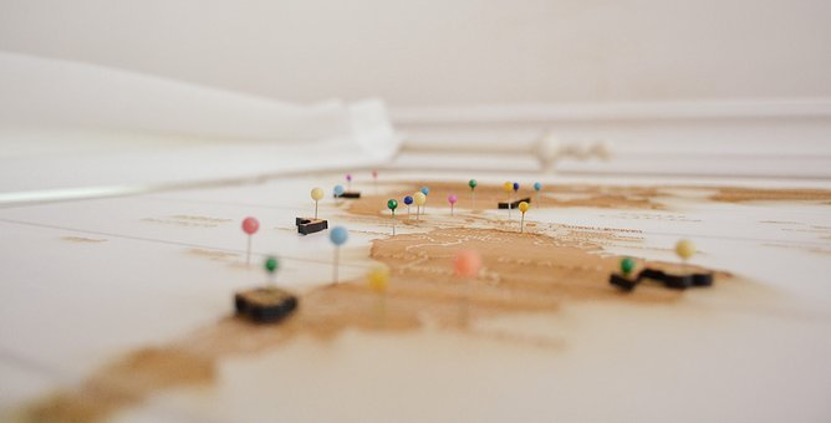Seminar Blogs
“Landmark Building: The Interface with the Past” – Liang Yue
 In the seminar of “The Cardiff Race Riots (1919): retraced, redrawn”, Mike Pearson, Professor Emeritus of Performance Studies at Aberystwyth University, shared his research project undertaken with National Theatre Wales about the Cardiff Race Riots. Personally speaking, among all the elements he used to retrace the historical event, those landmark buildings on the map of the rioter’s route are the most extraordinary work. They do not only revive the historical story but also connect the present with the past.
In the seminar of “The Cardiff Race Riots (1919): retraced, redrawn”, Mike Pearson, Professor Emeritus of Performance Studies at Aberystwyth University, shared his research project undertaken with National Theatre Wales about the Cardiff Race Riots. Personally speaking, among all the elements he used to retrace the historical event, those landmark buildings on the map of the rioter’s route are the most extraordinary work. They do not only revive the historical story but also connect the present with the past.
The old images of landmark buildings make history more vivid by strengthening our spatial sense of the event. Just like when we recall a protest we participated, our memories are both chronological and spatial. We clearly remember which step was taken at which location. However, when we read about the riot in the history book, the sense of space is always missing. Although the event can also be mediated in the form of film, the editing mode such as montage may weaken the consistency of the itinerary, resulting in fragmented special memory. Therefore, Pearson’s project is a successful combination of narratives and images or seen as a “one take documentary”. Only through this kind of reproduction can the event be placed in point-in-time and locations, which facilitates audiences to gain the event’s complete experience. In addition, according to Pearson, this way of presenting the story also has its advantage over the film. With the ongoing revelation, new-found images of the old landmarks or details of the event can be conveniently added to the show.
Another fascinating result of landmarks is that they evoke interaction between past and present. By marking the riot spots on the current Google map, the past reality has been summoned to here and now. When passing by a location, the audience could reproduce the image of the former building. For example, through the department store near Callaghan Square, people are reminded of the Royal Hotel, where the gunshot took place. After one century, the key locations where most clashes occurred have entirely changed. However, through the mediation based on the spot, people can still experience the history and rethink what has become the history heritages while others have been whitewashed. From this perspective, those landmarks serve as “locative media” that displace the identity of places with different representations (Hemment 2006, 350). The same location both historical or present due to differentiated mediation. The political implication of locative media, according to Drew Hemment, is “residing in the acceptance of the paradox and occupying the ambiguous space it creates, creating a site of resistance by working from the inside.” (Hemment 2006). Through contrasting the past and present, people can gain a new understanding of those landmarks.
References:
- Hemment, Drew. 2006. “Locative Arts”. Leonardo 39 (4): 348-355. doi:10.1162/leon.2006.39.4.348.

